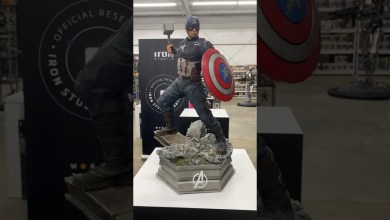Meet the Vietnamese dudes who built a $3M Pagani at home…
If you’ve been on automotive social media over the last three or four years, you will have undoubtedly seen some incredible videos and images of homebuilt hypercars made far from their European counterparts in Vietnam.
This passionate team build them in sheds, creating custom chassis for them with any metal spares available and crafting them to near perfection without ever seeing the cars.
Previously they made a Bugatti Chiron and LaFerrari replica but whilst impressive, they lacked a lot of the proportions and details of the real cars. The Chiron looks like it has an extra large chin but the wheels look far too small and the lights just look… cheap.
The LaFerrari had similar issues, looking squished at the front and too bulbous at the rear, but was an improvement with a pretty impressive interior.
The Huayra though, while not perfect is the most exact Pagani replica that the world has ever seen.
The project took 500 days in total and certainly differs from the traditional methods that Pagani use to make their cars. You see, earlier in last year I had the chance to visit the Pagani factory and observe their specialist team hand crafting each car, spending countless hours on each carbon part to insure maximum accuracy and efficiency.
Meanwhile, the same can’t exactly be said for this team. Instead of a state of the art autoclave to mould the carbon parts perfectly, they use what appear to be random bits of steel from their workshop to create the frame for the car and then plaster some clay over it to get the overall shape of the car. Once this has been done they simply cover the mould in fibreglass and use that for the car’s construction instead of carbon.
I can mock this all I want, comparing them to Pagani from my chair behind the camera, but the fact of the matter is that despite this rather rudimentary process, they have been able to shape a remarkably accurate Pagani Huayra, that whilst not perfect, bears strong resemblance to the real thing.
Perhaps the most questionable aspect of this is the structural integrity of using fibreglass for the entire body and a lot of the interior. If you’ve ever watched videos on replica steering wheels from cheap brands, you know how easily they’ll bend and fibreglass won’t simply bend, it’ll shatter and potentially cause serious harm. And it’s not just the steering wheel, it’s the seat and the dashboard and of course the rest of the body. This is opposed to the Pagani which uses carbon fibre, in part for its safety as whilst being far lighter than steel, it has proven to be far stronger in a crash.
But of course, I don’t think safety was exactly at the top of their list. In fact, I’d be surprised if it was even on it. What these guys care about is creating a replica Pagani and that is something they have certainly achieved with flying colours.
The blue paintwork looks gorgeous and for the first time on one of their cars, they had custom wheels made for it, which really gives it much more of an OEM look. Granted, there could be more dish at the rear, but I have to say, for something a few guys built in a shed it is truly astonishing.
It even has the opening clamshells and quad pipe exhaust system, just like a real Huayra.
Don’t forget to subscribe for more and let me know in the comments how much you’d pay for these guys to make you a replica Huayra.
Sure it might not pass inspection in any country including Vietnam but imagine putting a Mercedes SL600 V12 in it and using it on the track, or simply just being able to have a 1:1 Pagani model that you can show off to your friends.
Source: NHET TV
Enjoy!
[ad_2]
source



